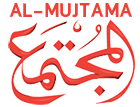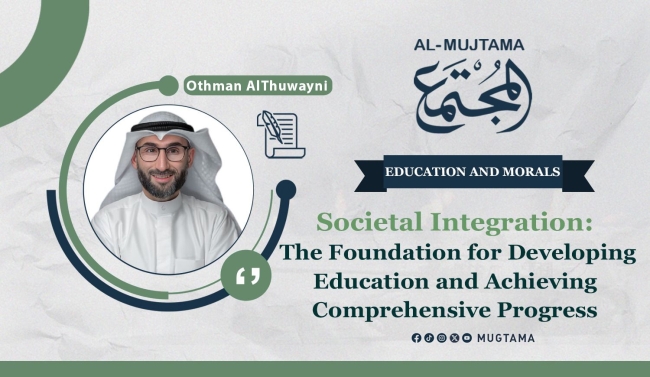Societal Integration: The Foundation for Developing Education and Achieving Comprehensive Progress
Education is the driving force behind the advancement and development of societies. It is the defining factor between a developing nation and a prosperous one. However, the development of education cannot be achieved through government efforts alone. It requires a broad societal integration that involves all stakeholders, from families to public and private institutions. This collective effort is necessary to conduct an objective and comprehensive assessment of the educational system and identify the real challenges hindering its progress. Such an evaluation is not merely a critical process; it is an essential step toward devising effective strategies to improve education and prepare a generation capable of facing future challenges.
To objectively assess education, societies must rely on scientific measurement tools that provide an accurate picture of the educational reality. Among these tools are international tests such as "TIMSS" and "PISA."
The "TIMSS" test aims to measure students' proficiency in mathematics and science for 4th and 8th grade, focusing on a deep understanding of scientific and mathematical concepts and students' ability to apply their knowledge in problem-solving. These tests help countries evaluate their educational curricula and the efficiency of their teachers, highlighting gaps that need to be addressed.
As for the "PISA" test, it focuses on assessing students' skills in reading, mathematics, and science at the age of 15, with a particular emphasis on their ability to think critically and apply acquired knowledge to real-life situations. This test serves as a tool to measure students' readiness for higher education or the labor market, making its results a vital indicator of educational quality.
When examining successful global experiences in improving education, there are inspiring examples that other societies can learn from. Finland's experience stands out as one of the most prominent, transitioning from a traditional educational system in the 1960s to an innovative model that now ranks highly in "PISA" tests. The secret to Finland's success lies in its great trust in its teachers. The country has invested heavily in their training and qualification at the highest levels, eliminating the emphasis on standardized testing, which has created a more creative and less stressful learning environment.
Conversely, Singapore has prioritized education as a national focus since the 1970s. It developed advanced curricula that emphasize critical thinking and problem-solving and linked education to labor market needs, placing it at the forefront of countries in "TIMSS" and "PISA" tests.
South Korea, on the other hand, has proven that investing in education can be the fastest path to economic recovery. By adopting technology and practical curricula, the country overcame post-war challenges and succeeded in building an educational system now considered among the best globally.
But why do these countries succeed while others face difficulties in developing education? The key lies in societal integration and collective effort. No government can reform education on its own without the involvement of families, teachers, and private institutions. Families play a pivotal role in monitoring the level of education and providing feedback on performance, while the private sector can contribute by funding educational projects and offering training programs for teachers. Moreover, involving students in the dialogue about education gives them a sense of responsibility for the educational process.
To effectively develop education, societies must adopt comprehensive strategies that draw from global experiences and adapt to local contexts. These efforts could begin with establishing community councils that include representatives from various sectors to provide recommendations based on real data.
Additionally, enhancing the use of technology in education is a fundamental tool for expanding learning opportunities and improving quality. Continuous teacher training programs are also essential to ensure they keep pace with the latest teaching methods. Finally, curricula must be comprehensive, focusing on teaching students life skills such as critical thinking, teamwork, and problem-solving.
Developing education is not merely about improving curricula, constructing schools, or changing administrators. It is a national project that requires the integration of all societal components. As demonstrated by the successes of Finland, Singapore, and South Korea, the path to a strong educational system begins with an accurate and objective assessment of the current reality, followed by well-planned reform strategies applied with wisdom and determination. If societies can achieve this integration, education will become the most powerful tool for building a bright future characterized by creativity and progress.
-------------------------------------------------------------


